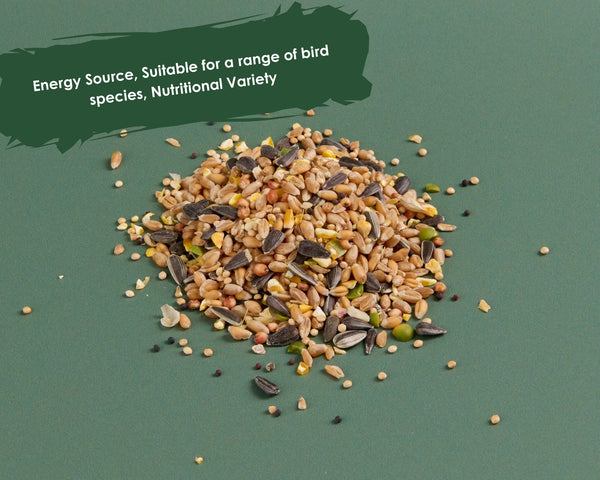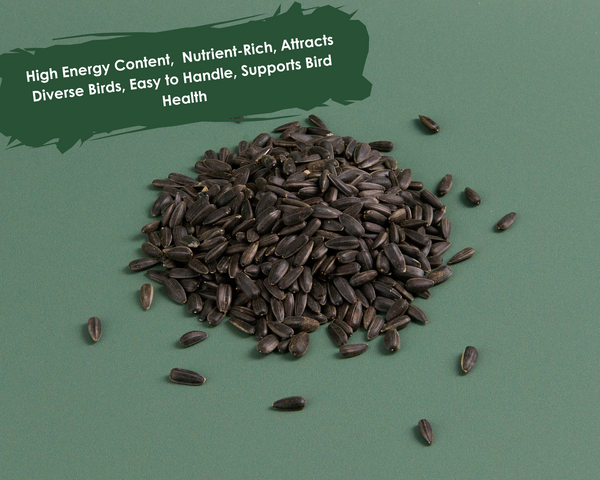Garden Birds in Different Seasons: How Their Habits Change Throughout the Year
Birds are a vibrant and integral part of our natural environment, and their presence in our gardens brings life, colour, and joy. Throughout the year, garden birds undergo fascinating transformations in behaviour, migration patterns, and habitat preferences as they adapt to the changing seasons.
In this blog post, we will explore the captivating world of garden birds and how their habits evolve across the seasons, shedding light on their remarkable resilience and adaptability.
Spring: The Season of Renewal and Nesting
As winter gives way to spring, a remarkable transformation takes place among garden birds. The arrival of longer daylight hours and milder temperatures triggers a surge in activity as birds prepare for breeding and nesting. Here are some notable changes during spring:
Courtship Displays
Male birds engage in elaborate courtship displays to attract mates. They showcase vibrant plumage, sing captivating songs, and perform intricate dances to establish their suitability as partners.
Nest Building
Spring is the time when birds construct nests to provide a safe haven for their eggs and young. They meticulously gather twigs, leaves, moss, and other materials to build sturdy and well-hidden nests, often in trees, hedges, or even bird boxes.

Egg-Laying and Incubation
Once the nest is built, female birds lay their eggs, usually one at a time. They carefully incubate the eggs, ensuring warmth and protection until they hatch.
Increased Feeding
During spring, birds require ample food resources to sustain their energy levels for breeding. Insect populations also rise during this season, providing a valuable food source for garden birds and their growing chicks. Bird Feeders and bird tables can be particularly helpful for all birds during Spring.
Summer: Raising the Next Generation
Summer brings warmth and abundance, and it is the time when garden birds focus on rearing their young. Here's how their habits change during this season:
Feeding Frenzy
With hungry chicks in the nest, adult birds intensify their search for food. They rely heavily on insects, caterpillars, spiders, and other invertebrates to meet the high demands of their growing offspring.

Territory Defence
During the breeding season, birds fiercely defend their territories against intruders. Songs, calls, and displays become more pronounced as they protect their nesting sites and foraging areas.
Fledgling Independence
As summer progresses, the young birds gradually leave the nest and begin exploring their surroundings. They rely on their parents for guidance and feeding, but they also develop their flight skills and foraging abilities.
Autumn: Preparing for Migration
As summer transitions to autumn, garden birds undergo significant changes in preparation for the impending winter and migration:
Fattening Up
Birds instinctively increase their food intake, consuming berries, seeds, and nuts to build up fat reserves. This extra energy will sustain them during migration or help them survive the colder months.
Grouping Together
Many bird species form flocks during autumn, congregating in large numbers to feed and roost together. These flocks provide safety in numbers, increased foraging efficiency, and opportunities for social interaction.
Migration Begins
For some garden birds, autumn marks the beginning of their long and remarkable migratory journeys. They navigate thousands of miles, guided by instinct and celestial cues, to reach warmer climates with abundant food resources.
Winter: Adaptations for Survival
Winter presents numerous challenges for garden birds, such as limited food availability and harsh weather conditions. To survive, they employ various strategies:
Food Scarcity Solutions
As natural food sources dwindle, garden birds rely on bird feeders, suet, and seed mixes provided by humans. These supplementary food sources become essential for their survival during the lean winter months.
Roosting and Shelter
Garden birds seek sheltered roosting spots to conserve energy and stay warm. They may gather in dense shrubs, evergreen trees, or even utilise bird boxes or roosting pockets for protection from the cold.
Adaptations
Many garden bird species have physical adaptations that aid their survival in winter. These include fluffing up their feathers to create insulating air pockets, reducing heat loss, and growing specialised feathers that provide better insulation against the cold.
Wintering Grounds
Some garden birds, instead of migrating, remain in their territories year-round and adapt to the winter conditions. They may change their foraging habits, relying more on berries, seeds, and other available food sources.
Social Behaviour
During winter, garden birds often gather in mixed-species flocks. By joining forces, they increase their chances of finding food, share information about food sources, and provide safety through collective vigilance against predators.
Conservation and Supporting Garden Birds Year-round
To support garden birds throughout the seasons and contribute to their conservation efforts, consider the following actions:

Provide a Year-round Food Source
While winter is a critical time for feeding, offering bird feeders and maintaining them throughout the year ensures a reliable food source for garden birds. Use a variety of feeders and food types to attract different species.
Create Shelter and Nesting Opportunities
Plant a diverse range of trees, shrubs, and flowering plants in your garden to provide nesting sites and shelter. Consider installing bird boxes, nesting platforms, or even leaving dead trees for cavity-nesting species.
Provide Water
Birds need access to clean water for drinking and bathing throughout the year. Install a birdbath or shallow water feature in your garden and keep it ice-free during winter by using a heater or regularly changing the water.
Minimise Pesticide Use
Reduce or eliminate the use of pesticides in your garden. These chemicals can harm insects, which are a vital food source for garden birds and their offspring.
Create a Bird-friendly Environment: Incorporate bird-friendly elements in your garden, such as perches, brush piles, and native plants that attract insects. These features provide birds with foraging opportunities and natural hiding spots.
Conclusion
Garden birds undergo remarkable transformations throughout the year, adapting their behaviours, habitats, and feeding patterns to the changing seasons. By understanding and appreciating these adaptations, we can create a garden environment that supports and sustains these beautiful creatures. Whether it's providing food, water, shelter, or minimising environmental impacts, our actions can play a significant role in the conservation and well-being of garden birds year-round. Let us embrace the wonder of these avian visitors and celebrate the diverse rhythms of their lives as they grace our gardens with their presence.










